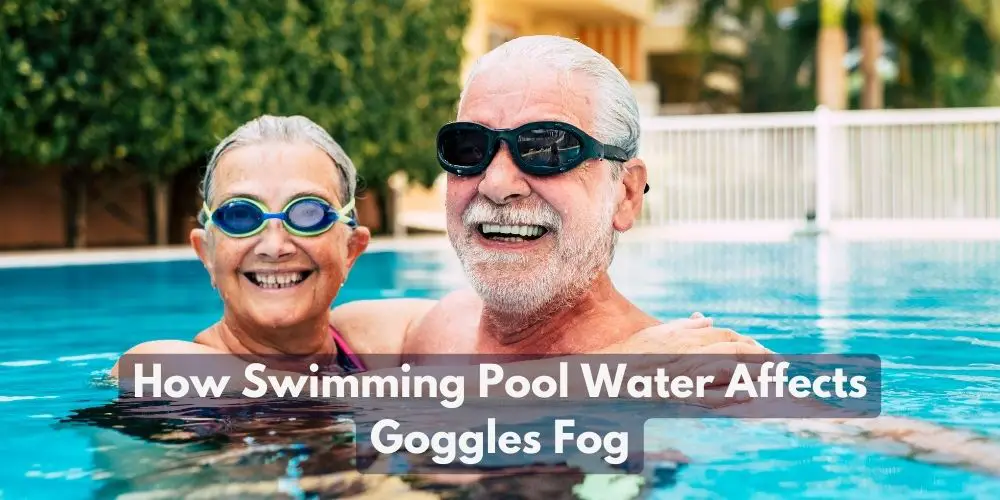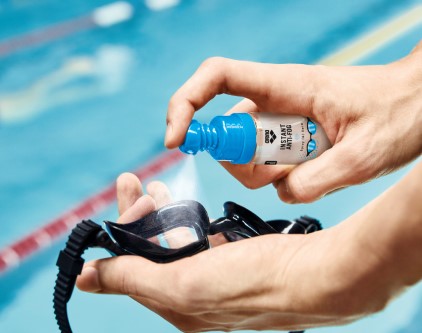
Have you ever experienced the frustration of swimming with foggy goggles? You plunge into the crystal-clear swimming pool water, ready to enjoy a refreshing swim, only to find your vision impaired by a cloudy haze. It’s a common annoyance that many swimmers face, but have you ever wondered why swimming pool water affects goggles fog? This blog post will dive into the science behind this phenomenon and shed more light on how swimming pool water affects goggles fog.
Clear vision is essential for swimmers. Whether you’re a recreational swimmer, a competitive athlete, or someone who simply enjoys the water, being able to see not only enhances the experience but also ensures your safety. Foggy goggles can hinder your visibility, making it difficult to navigate, spot obstacles, or even swim confidently. Understanding why swimming pool water causes goggles to fog is the first step towards finding effective solutions.
How Swimming Pool Water Affects Goggles Fog
Goggles fog up due to a combination of factors, primarily related to temperature and moisture.
1. Temperature Difference
The main reason goggles fog up while swimming is the temperature difference between the air inside the goggles and the surrounding water. The water in swimming pools is typically cooler than the warm air trapped inside the goggles. When you immerse yourself in the water, the warm air inside the goggles meets the cooler water, creating a temperature gradient. This temperature difference causes the moisture in the air to condense on the cooler lens surface, resulting in foggy goggles.
2. Trapped Moisture
Another contributing factor is moisture trapped inside the goggles before you put them on. Moisture from your face, hair, or residual water can create a humid environment inside the goggles. When this moisture comes into contact with the colder lenses, it condenses and forms fog.
3. Presence of chemicals in water
Additionally, the presence of certain chemicals in swimming pool water, such as chlorine, can further exacerbate fogging. Chlorine, a common disinfectant used in pools, can react with the lens materials or any coatings on the goggles, leading to fog formation.
Tips to prevent goggles from fogging

It’s important to note that different goggles and lens materials may have varying degrees of susceptibility to fogging. Some goggles come with anti-fog coatings, which help minimize fog formation by dispersing moisture on the lens surface. However, these coatings can wear off over time, requiring proper maintenance and care to ensure their effectiveness.
1. Choose goggles with built-in anti-fog properties
Why settle for regular goggles when you can have the magic of anti-fog technology on your side? Look for swimming goggles specifically designed with anti-fog features. These goggles have special coatings or materials that disperse moisture and prevent fogging. By investing in a pair of anti-fog goggles, you’ll enjoy clear vision throughout your swim without the annoyance of fog obstructing your view.
2. Avoid wiping the inside of your swim goggles
Here’s a simple rule to remember: hands off the inside of your goggles. While giving them a quick wipe to clear the fog may be tempting, resist the urge. Wiping the inside of your goggles with your fingers or a towel can actually damage any existing anti-fog coatings and create tiny scratches on the lenses. These scratches can become breeding grounds for fog and impair your vision even more. So, resist the temptation to wipe, and let your goggles do their job without interference.
3. Harness the power of anti-fog spray
If you’re using regular goggles or your anti-fog goggles are losing their effectiveness over time, don’t fret! You can give them a boost with the help of an anti-fog spray. These sprays contain specially formulated solutions that create a thin protective layer on the lenses, preventing fog from forming. You’re good to go with just a few spritzes and a quick rinse. Keep an anti-fog spray in your swim bag when your goggles need a little extra fog-fighting power.
4. Keep cool and cool your face
Heat and sweat can contribute to foggy goggles, so staying cool is key! Before putting on your goggles, splash some cool water on your face. This helps lower your face’s temperature and reduces the chances of condensation forming inside the goggles. Additionally, if you are overheating during your swim, take a moment to cool down. Exiting the water and exposing your goggles to the surrounding air can lead to fogging. Instead, keep your goggles on and briefly dip your face in the water to maintain their temperature equilibrium.
5. Embrace the power of saliva
Believe it or not, your spit can be a handy anti-fog tool. Saliva acts as a surfactant, reducing the surface tension of water droplets and preventing them from forming a foggy layer on your goggles. Before hitting the water, spit in your goggles and give them a quick rinse. The surfactant properties of your saliva will help keep fog at bay. It may sound a bit unconventional, but many swimmers swear by this tried-and-true method.
6. Choose the right lenses for your swim goggles
Not all lenses are created equal when it comes to fog prevention. Some goggles offer different lens options, such as clear, tinted, or mirrored lenses. Clear lenses are ideal for indoor swimming or low-light conditions, while tinted or mirrored lenses are designed for outdoor swimming, reducing glare and providing UV protection. Selecting the appropriate lenses for your swimming environment optimizes your visibility and minimizes the likelihood of fogging.
Are anti-fog goggles effective at preventing fogging?
Anti-fog goggles are designed to combat fogging and effectively prevent fog from obstructing your vision while swimming. These goggles feature advanced technologies, such as special coatings or materials, that disperse moisture and inhibit fog formation on the lens surface.
It’s important to note that while anti-fog goggles provide significant fog prevention, their effectiveness may diminish over time due to wear and tear or prolonged exposure to chlorine or other chemicals. Proper maintenance and care, such as rinsing the goggles with clean water after each use and avoiding wiping the inside of the lenses, can help prolong their anti-fog properties.
Final Thoughts
Clear vision is essential for swimmers, providing an enjoyable experience and ensuring safety in the water. Implementing the tips we’ve discussed ensures you can maintain fog-free goggles and enhance your swimming adventures. As a final tip, remember to properly care for your goggles by rinsing them with clean water after each use and storing them in a protective case. This will help prolong their anti-fog properties and ensure long-term performance.
